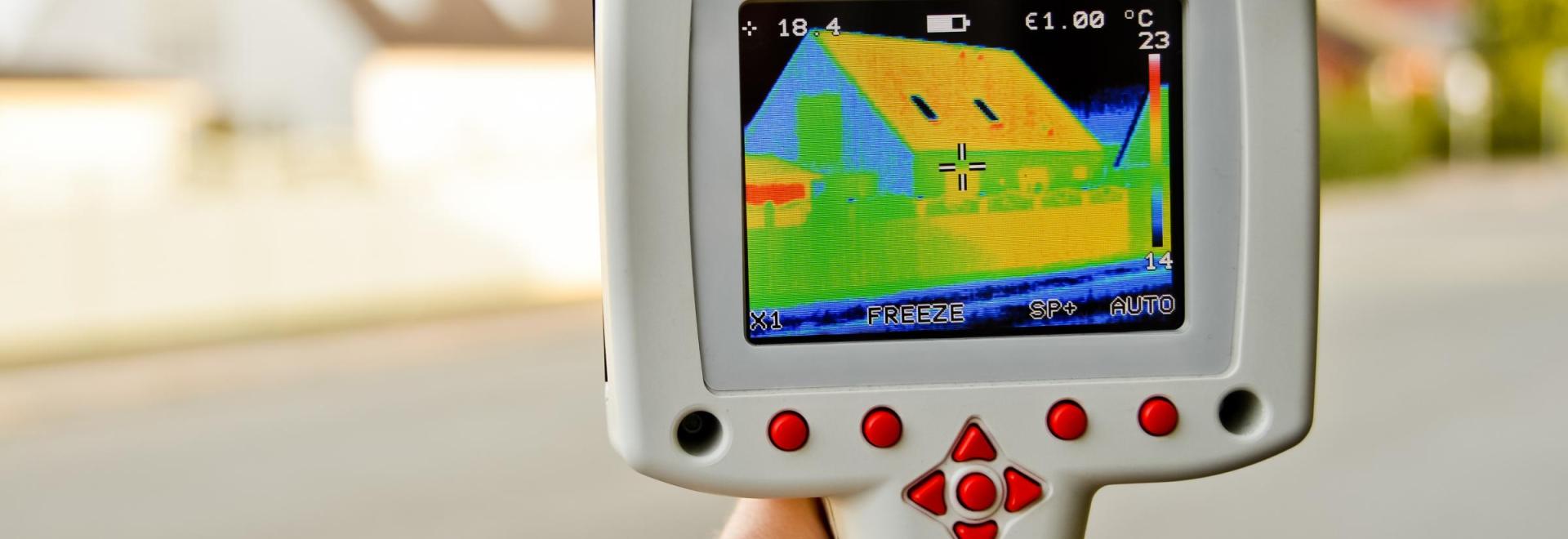
Have you ever noticed that certain parts of your home are draftier and more difficult to cool and heat properly than others? Are temperature swings a regular occurrence, especially during the extreme months of the year? If these problems sound familiar, there’s a good chance that your home is suffering from air leakage, which can lead to a number of different problems that will negatively affect home efficiency.
All homes breathe. Air escaping from your home can account for up to half of its energy loss. Air entering your home from the attic or foundation (basement or crawl space) can bring mold and dust with it, creating a variety of comfort problems and health hazards. In reality, 50% of the air we breathe comes from the foundation. While you may feel drafts in the winter as you pass by windows and doors, the biggest source of air leaks in most homes are actually from the attic, foundation, and attached garage. Look for spider webs in the attic and in the basement or crawl space ceiling and around the perimeter and in windows. Spiders tend to gravitate towards free-flowing air so they can catch passing bugs.
Attics and Floors over unconditioned crawlspaces, garages, and basements all leak air from one space to the other, known as thermal bypasses. Look for dirty insulation in attics. This is a sign that the insulation is acting as a filter between the attic and living spaces. Leaky floors over crawlspaces, garages, and unconditioned basements (hardwood floors contract during the winter and allow air movement from below), allow mold, mildew, and other not so pleasant smells and unhealthy air into the home.
As such, the conditioned living space where the occupants reside breathes like the “lungs” of your house. Your home’s thermal envelope acts much like your “skin” that serves as a shield to guard the interior and occupants from external threats of adverse temperatures, humidity, contaminants, pests, etc. while providing a barrier to protect from interior loss of comfort and energy.
This “skin” determines what that house absorbs and allows to escape.
At Pippin Brothers Home Services, we can’t stress highly enough just how important it is for homeowners in Lawton, OK to focus on air sealing and insulation. This creates an impenetrable barrier between conditioned areas of the home and the air outside. This reduces unfiltered, unconditioned, humid air from entering your home, which minimizes dust, dirt, pollution and pests. It also ensures that harmful gases and toxins (from an attached garage, for example) don’t enter your living space, ensuring a safer, healthier environment for you and your family.
Looking to tighten things up around your home and improve indoor air quality? It doesn’t have to be as hard as you might think. Here are a few of the most common areas of the home to lack insulation and air sealing, all of which should be focused on in an effort to improve home performance, comfort and energy efficiency and savings:

Wall Chase
This is one of the most prominent yet overlooked problems in homes throughout the area. A wall chase is directed to the attic as a measure for improving air flow, yet it can often lack sealing at the point where it makes contact with the attic. What this means is that the air inside your system is getting released directly into the attic. Unsurprisingly, fixing this issue can have a markedly positive impact on energy efficiency and air leakage.
Recessed Lights
Recessed lighting may look nice, but air leakage is an unfortunate and common problem of this type of lighting. Stopping air leakage from recessed lights means addressing each individual light with air sealing and insulation, and since every home is different, there’s no “one size fits all” solution to stopping air loss from light fixtures.
Dryer Vent
Your dryer vent is especially important to focus on when attempting to reduce air loss. It needs to be sealed from the outside, and it’s important to ensure that your ductwork is up to par as well. Otherwise, clogs or leaks can result in fire hazards that can threaten the safety of your living space.
Attic Hatch
The point where your attic connects to the rest of your home is certainly a common culprit for air loss. Since it’s important to maintain the ability to access your attic, the hatch must be properly treated to reduce air loss without also reducing functionality.
Other common air loss “problem areas” include:
- Plumbing Vents
- Open Soffits
- Windows and Doors
- Duct Registers
- Dropped Soffits
Ready to stop air loss in its tracks? The team of BPI-certified contractors at Pippin Brothers Home Services is here to help. We can perform a whole home air leakage test to show where you are experiencing air leakage and energy escape. We can also conduct an infrared thermal imaging scan of your home to show air leakage and areas of low or missing insulation in your home.